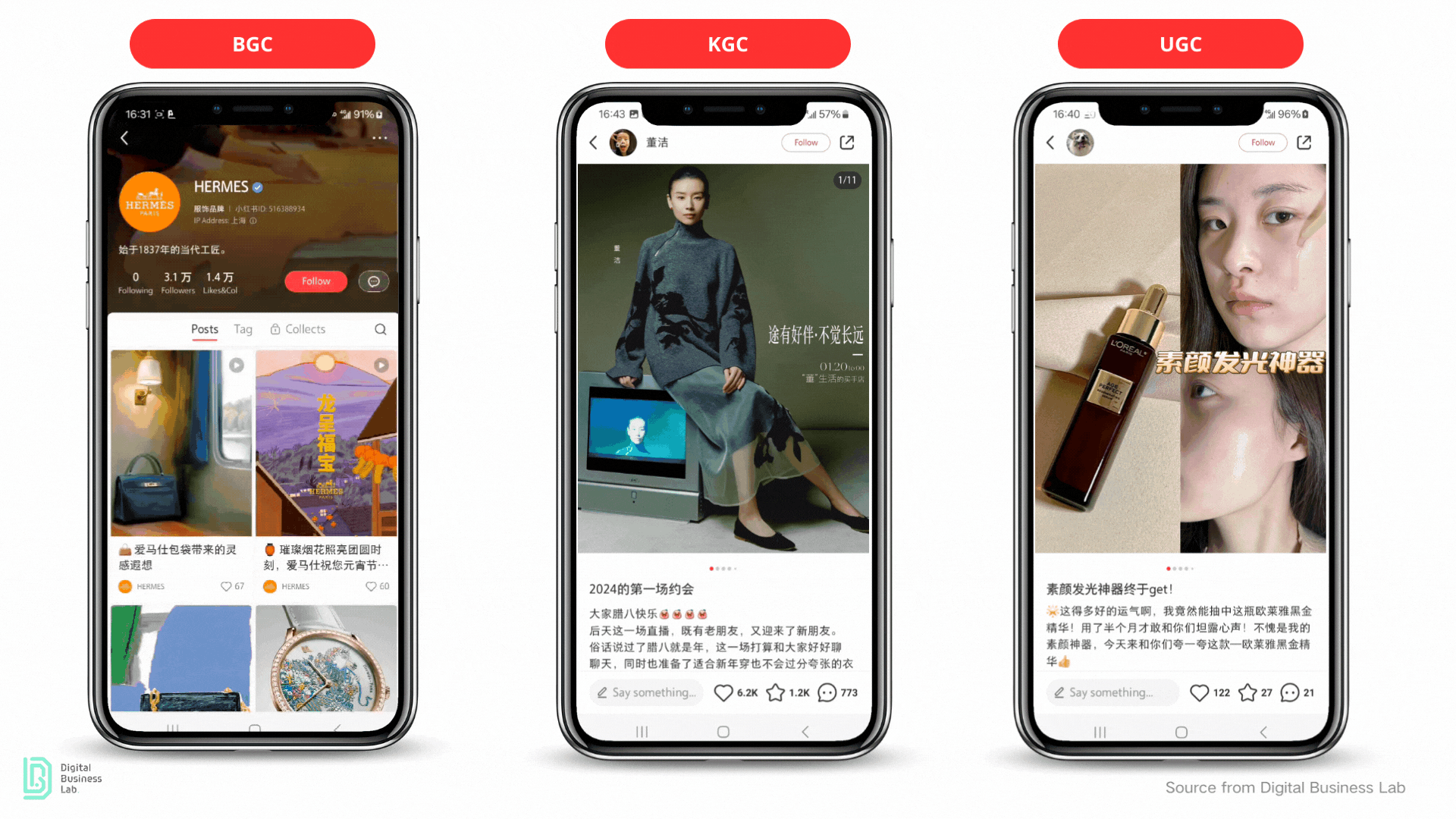Welcome to our 2024 guide for Little Red Book, Part 2 (click here to review our first part). In this article, we will continue discussing the rise of Little Red Book and its increasing popularity among the Chinese community.
Little Red Book has become a key platform within the Chinese community, mainly due to its emphasis on fostering a community-driven environment. It has evolved into a vital community where 69 million users regularly share authentic experiences. This success is attributed to the platform’s commitment to its core principle of being “community-powered,” encouraging authentic content creation and user sharing.
To achieve its primary goal, Little Red Book leverages three unique features to grow quickly and become more popular among the Chinese community.
(1) The Influence of Word-of-Mouth and “Planted Grass” (种草)
The appeal of Little Red Book among Chinese users is significantly attributed to its word-of-mouth dynamic. Overwhelmed by ads daily, Chinese consumers trust recommendations from familiar sources more. Little Red Book’s thriving communities around various interests have propelled the phenomenon of “Planted Grass,” where users are inspired to purchase after discovering products through platform content. Nielsen’s report highlights that over 80% of Little Red Book users feel influenced by such content, underscoring the platform’s impact on consumer decisions.
(2) A Dynamic Content Ecosystem
Another pivotal element in Little Red Book’s success is its authentic content strategy, which empowers brands to cultivate a diverse and enriched brand image.
By blending Brand-Generated Content (BGC) with insights from Key Opinion Leaders (KGC) and genuine User-Generated Content (UGC), brands can showcase their narrative, ethos, and offerings dynamically.
- Brand-Generated Content (BGC): Prominent examples include luxury brands like Hermes and Louis Vuitton, alongside exclusive high-end names like Augustinus Bader, which have established official accounts on the platform. Each brand profile gives users direct insights into brand philosophies, product launches, and exclusive content.
- KOL-Generated Content (KGC): Top-tier influencers, including celebrities such as Dongjie (董洁), Zhang Xiaohui (章小蕙), and YikeKK (一颗KK), who have a large fan base and influence, can generate high levels of discussion and attention for a brand, making it easier to create hit products. Other mid-tier influencers focus on deep engagement within their niche, enhancing trust and a sense of belonging among their audience and boosting brand recognition.
- User-Generated Content (UGC): UGCs are central to the platform, contributing to creative content sharing. It serves as a vital channel for brands to gather in-depth product feedback and sustain customer relationships by engaging with posts that mention their brands (官号互动). This open exchange of experiences and recommendations is crucial for brands to leverage in their campaigns and make them more recognisable to a broader audience, ensuring sustained interest and engagement from the target audience.

(3) How the Little Red Book Algorithm Can Help
Unlike Douyin, where the emphasis might be on showcasing broadly appealing or viral content, Little Red Book focuses on fostering deeper connections between users and the content that truly resonates with them. To effectively use their Explore feed and Search page algorithms and gain more attention from audiences, brands need to consider the 5 points below:
- Engaging Cover Photos: Choose clear, captivating images that reflect your brand’s essence.
- Compelling Headlines: Write titles that pique interest, incorporating relevant keywords.
- Keyword-Rich Descriptions: Be concise and engaging, using emojis and hashtags for better SEO.
- Engage with Comments: Respond promptly to user comments to boost engagement.
- Optimal Posting Times: Identify and post during peak engagement hours to maximise visibility.
Overall, Little Red Book’s unique blend of community atmosphere, content ecosystem, and algorithm distinguishes it significantly from Douyin and other social media platforms. This combination offers fertile ground for brands to cultivate content that genuinely connects with their audience, fostering a vibrant environment conducive to authentic engagement.
Why Should Brands Pay Attention to Little Red Book in 2024?
Leveraging growth opportunities in mainland China has become a challenge for brands in 2024. As more and more brands want to stand out, Little Red Book, with its unique positioning and vibrant community, has developed into one of the most crucial platforms for brands seeking to navigate this landscape effectively.
The three types of content—BGC, KGC, and UGC—create a holistic marketing ecosystem with which no other platforms in China can compete. Here, B2C brands can showcase their products and share their brand philosophy in a way that connects emotionally with a young and trend-savvy audience.
We will keep you updated with in-depth content about Little Red Book, so stay tuned for more insights and success stories from this dynamic platform.
Explore our projects that utilised Little Red Book to enhance their impact:
(1) Xiaohongshu Influencer Marketing: Driving Immediate Leads for HK7s in Mainland China
(2) AIA Carnival: Xiaohongshu Influencer Marketing in Hong Kong: Boosting AIA Carnival ticketing


